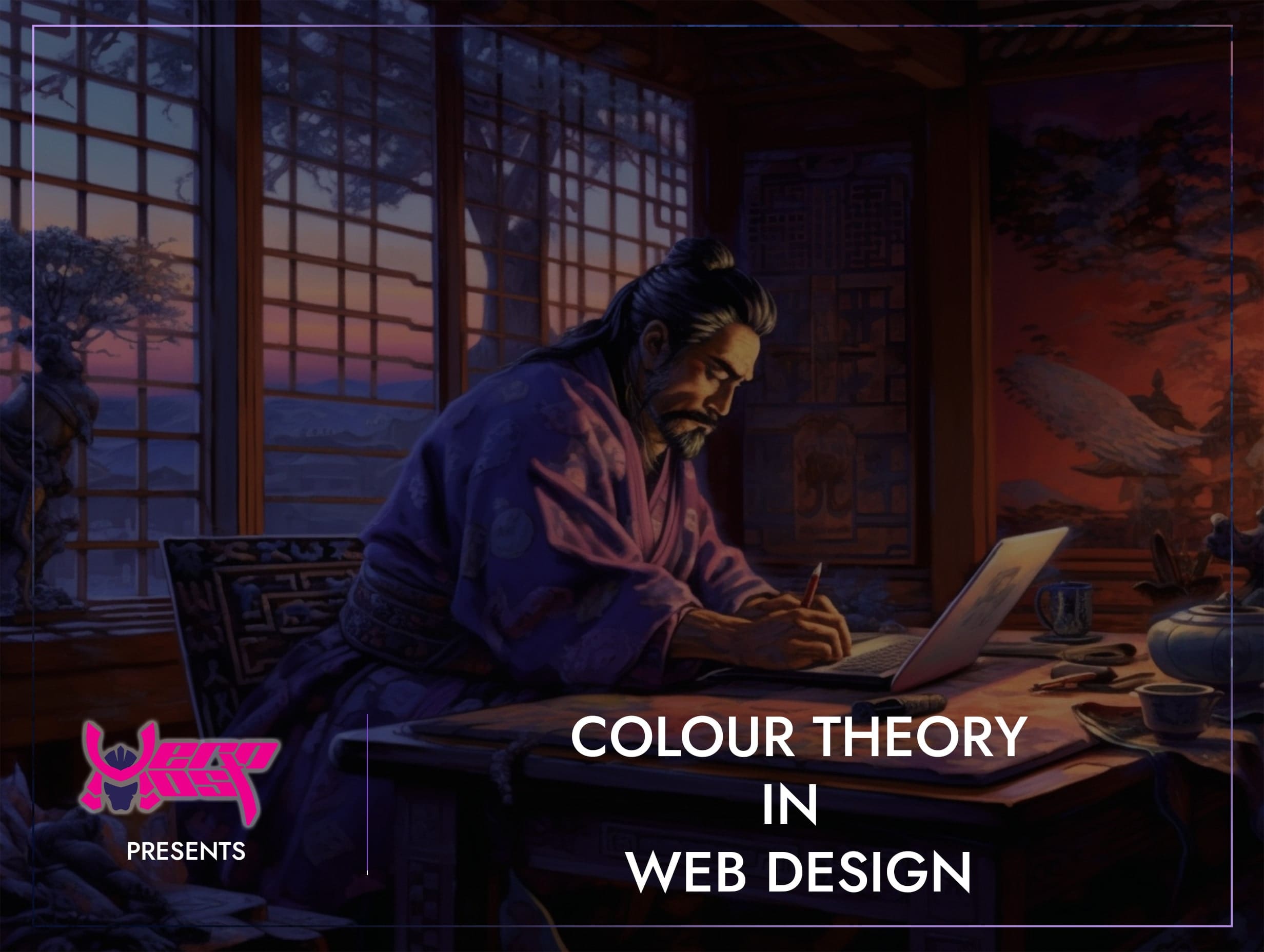Colour Theory in Web Design
- Home
- Web Design
- Colour Theory in Web Design

- Mikey Ryu
- May 24, 2024
- 0
Colour Theory in Web Design
Colour is a powerful tool in web design, capable of influencing mood, communicating information, and guiding users’ actions. Understanding colour theory is crucial for designers seeking to create visually appealing and effective websites. This blog explores the fundamental aspects of colour theory in web design and provides insights on how to apply these principles to enhance both the aesthetic quality and functionality of a website.
The Basics of Color Theory
Colour theory is a branch of visual arts that explains how humans perceive colour and the visual effects of how colours mix, match, or contrast with each other. Colours can create a sense of harmony, evoke emotions, and lead actions on a website.
Primary, Secondary, and Tertiary Colors
Colours are categorised into three types: primary (red, blue, and yellow), and secondary (green, orange, and purple), which are created by mixing two primary colours, and tertiary colours, made from primary and secondary hues. Understanding this colour wheel is foundational for creating colour schemes in web design.
Warm and Cool Colors
Warm colours (like red, orange, and yellow) are vibrant and energetic, while cool colours (such as blue, green, and purple) are calming and soothing. This distinction can help dictate the mood of a website and influence how users feel when they interact with it.
Using Color Schemes in Web Design
Choosing the right colour scheme is vital to creating an effective website design. The colour scheme should align with the brand’s identity and the purpose of the website, ensuring that it effectively communicates the intended message.
Complementary Colors
Complementary colours are opposite each other on the colour wheel, such as blue and orange. This scheme offers a high contrast and high-impact colour combination that is vibrant and energetic.
Analogous Colors
Analogous colour schemes use colours that are next to each other on the colour wheel. They usually match well and create serene and comfortable designs. This scheme is often used to create a harmonious and unified feeling on websites.
Triadic Colors
A triadic colour scheme involves colors that are evenly spaced around the colour wheel. This scheme is popular among designers who seek vibrant colour palettes without the tension of a complementary scheme.
Psychological Effects of Colors: Positive and Negative Responses
Colours not only enhance the visual appeal of a website but also exert a significant influence on user perception and behaviour. Each colour can evoke both positive and negative emotional responses depending on its context and usage. Understanding these dual impacts is crucial for designers to make informed decisions that align with the desired reaction from their audience.
Red
Positive Effects: Red is a powerful colour that can evoke feelings of passion and excitement. It is often used to grab attention and encourage action, making it a popular choice for ‘Call to Action’ buttons or promotional banners.
Negative Effects: However, red can also signal danger or provoke feelings of aggression and stress if overused. It can be overwhelming or create a sense of urgency that might not always be welcome, especially in relaxed or professional settings.
Blue
Positive Effects: Blue is associated with tranquillity, reliability, and professionalism. It is widely used in business and technology sectors to promote trust and security.
Negative Effects: On the flip side, blue can sometimes appear cold or aloof. In environments where warmth and personal touch are crucial, relying too heavily on blue might make a site seem impersonal and uninviting.
Green
Positive Effects: Green is the colour of nature and is often used to symbolize health, renewal, and harmony. It is ideal for brands promoting natural products or wellness services, as it helps convey a sense of peace and balance.
Negative Effects: In the wrong context, green can convey overtones of envy or inexperience. Certain shades might also be perceived as sickly or lacking in energy, which could detract from the vibrancy and dynamism of a website.
Yellow and Orange
Positive Effects: These colours are bright and energetic, often used to instil a sense of optimism and creativity. They can stimulate cheerfulness and are effective at drawing attention.
Negative Effects: However, yellow and orange can also be abrasive if the shades are too bright or if they dominate a palette. Overuse can lead to visual fatigue and irritation. These colours can also be perceived as frivolous or not serious, which might undermine a brand’s message in more formal or traditional sectors.
Purple
Positive Effects: Purple is traditionally associated with luxury, wisdom, and dignity. It is a versatile colour often used in creative industries as well as in the beauty and health sectors to imply quality and depth.
Negative Effects: Conversely, purple can sometimes be seen as pretentious or melancholic, especially darker shades. If not balanced correctly, it can overwhelm a website and alienate users who perceive it as too bold or overpowering.
Conclusion
While colours can greatly enhance user experience and engagement, it is important to use them thoughtfully to avoid unintended negative reactions. The context in which colours are used, the cultural connotations associated with them, and their combinations on a site all play critical roles in shaping how users feel and respond. Designers must consider both the positive and negative potential of colours to create a balanced, effective web design that resonates with their audience.
Search
Categorys
- Branding (12)
- Business Growth Guides (3)
- Business Insights (3)
- Content Marketing (43)
- Domain Authority (19)
- Email Marketing (28)
- Google Analytics & Search Console (5)
- Hack or Not (2)
- Hero Host News (0)
- Inbound Marketing (32)
- Lessons From Asia (40)
- Marketing Guides (11)
- Martial Arts Journey (14)
- Outbound Marketing (8)
- Search Engine Optimisation (SEO) (41)
- Social Media Marketing (38)
- Web Design (20)
- Website Hosting (4)
- Wordpress (2)






